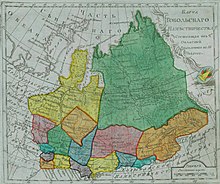
Tomsk Oblast is a federal subject of Russia. It lies in the southeastern West Siberian Plain, in the southwest of the Siberian Federal District. Its administrative center is the city of Tomsk. Population: 1,047,394.

Omsk Oblast is a federal subject of Russia, located in southwestern Siberia. The oblast has an area of 139,700 square kilometers (53,900 sq mi). Its population is 1,977,665 with the majority, 1.12 million, living in Omsk, the administrative center.

Tobolsk is a town in Tyumen Oblast, Russia, located at the confluence of the Tobol and Irtysh rivers. Founded in 1590, Tobolsk is the second-oldest Russian settlement east of the Ural Mountains in Asian Russia, and was the historic capital of the Siberia region. Population: 100,352 (2021 Census); 99,694 (2010 Census); 92,880 (2002 Census); 94,143 (1989 Soviet census).

Tara is a town in Omsk Oblast, Russia, located at the confluence of the Tara and Irtysh Rivers at a point where the forested country merges into the steppe, about 300 kilometers (190 mi) north of Omsk, the administrative center of the oblast. Population: 27,318 (2010 Census); 26,888 (2002 Census); 26,152 (1989 Soviet census).

Tiflis Governorate was a province (guberniya) of the Caucasus Viceroyalty of the Russian Empire with its administrative centre in Tiflis. In 1897, it constituted 44,607 square kilometres (17,223 sq mi) in area and had a population of 1,051,032 inhabitants. Tiflis Governorate bordered Elizavetpol Governorate to the southeast, Erivan Governorate to the south, Kars Oblast to the southwest, Batum Oblast to the west, Kutaisi Governorate to the northwest, Terek Oblast to the north, Dagestan Oblast to the northeast, and after 1905, the Zakatal Okrug to the east. The governorate covered areas of central and southeastern Georgia, the partially recognised state of South Ossetia, most of the Lori Province of Armenia, small parts of northwestern Azerbaijan, and a minuscule southern part of Ingushetia of Russia.

Kiev Viceroyalty was an administrative-territorial unit (namestnichestvo) of the Russian Empire, which existed in 1781–1796. It was created in the process of Catherine's reforms initiated by edict of November 7, 1775.
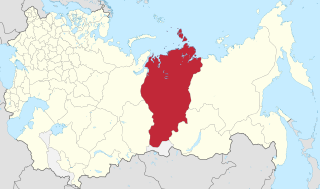
Yeniseysk Governorate was an administrative-territorial unit (guberniya) of the Russian Empire, the Russian Republic, and the Russian SFSR in 1822–1925. It was named after Yeniseysk.

Vologda Viceroyalty was an administrative-territorial unit (namestnichestvo) of the Russian Empire, which existed in 1780–1796. The seat of the Viceroyalty was located in Vologda.
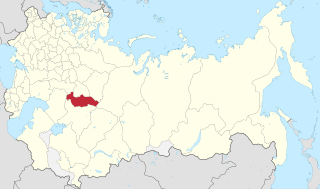
Orenburg Governorate was an administrative-territorial unit (Governorate) of the Russian Empire. Its capital in 1797–1802 and 1865–1928 was Orenburg, and Ufa in 1802–1865.
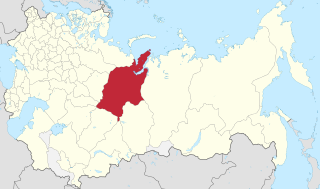
Tobolsk Governorate was an administrative-territorial unit (guberniya) of the Russian Empire, Russian Republic and Russian SFSR located in the Ural Mountains and Siberia. It existed from 1796 to 1920; its seat was in the city of Tobolsk, and from 1919 to 1920, in the city of Tyumen.
Novgorod Viceroyalty was an administrative-territorial unit (namestnichestvo) of the Russian Empire, which existed in 1776–1796. The seat of the Viceroyalty was located in Novgorod.
Pskov Viceroyalty was an administrative-territorial unit (namestnichestvo) of the Russian Empire, which existed in 1777–1796. The seat of the Viceroyalty was located in Pskov. Both the predecessor and the successor of the viceroyalty was Pskov Governorate. In terms of modern administrative division of Russia, the area of the viceroyalty is currently split between Pskov, Leningrad, Tver, and Novgorod Oblasts.

Akmolinsk Oblast was an Oblast (province) of the Russian Empire. It roughly corresponded to most of present-day northern Kazakhstan and the southern part of Omsk Oblast in Russia. It was formerly part of Kazakh khanate. It was created after the division of the Siberian Kirghiz into the oblasts Akmolinsk and Semirechensk on 21 October 1868. Its center was Omsk and consisted of uezds of Akmolinsk, Atbasar, Kokchetav, Omsk and Petropavlovsk. It bordered Tobolsk Governorate to the north, Semipalatinsk Oblast to the east, Semirechye Oblast to the northeast, Syr-Darya Oblast to the south, Turgay Oblast to the southwest and Orenburg Governorate to the northwest.
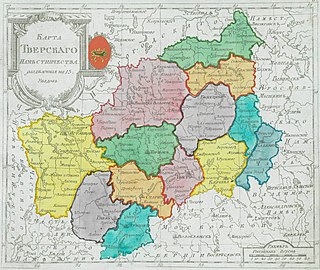
Tver Viceroyalty was an administrative-territorial unit (namestnichestvo) of the Russian Empire, which existed from 1775 until 1796. Its seat was in Tver. In 1796, it was transformed to Tver Governorate.

Tomsk Governorate was an administrative-territorial unit (guberniya) of the Russian Empire, the Russian Republic, and the Russian SFSR, which existed from 1804 to 1925 as part of Siberian Governorate-General (1804–1822) and West Siberian Governorate-General (1822–1882). Its capital was in Tomsk.
Little Russia Governorate may refer to:

Chebaki is a village in the Shirinsky District of Khakassia, Russian Federation.
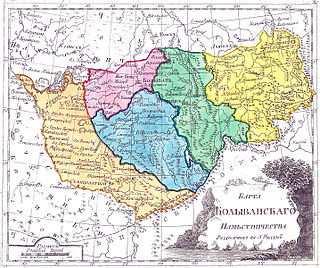
Kolyvan Viceroyalty, later Kolyvan Governorate, was an administrative-territorial unit of the Russian Empire, which existed in 1783–1796.

Tomsky Uyezd, known as Tomsk Okrug during some periods, was an administrative division of Tomsk Governorate. Its administrative center was the city of Tomsk.

The Oblast of Siberian Kirghiz was an administrative-territorial unit of the Russian Empire, which existed from 1854 to 1868. The administrative centre was the city of Omsk.
